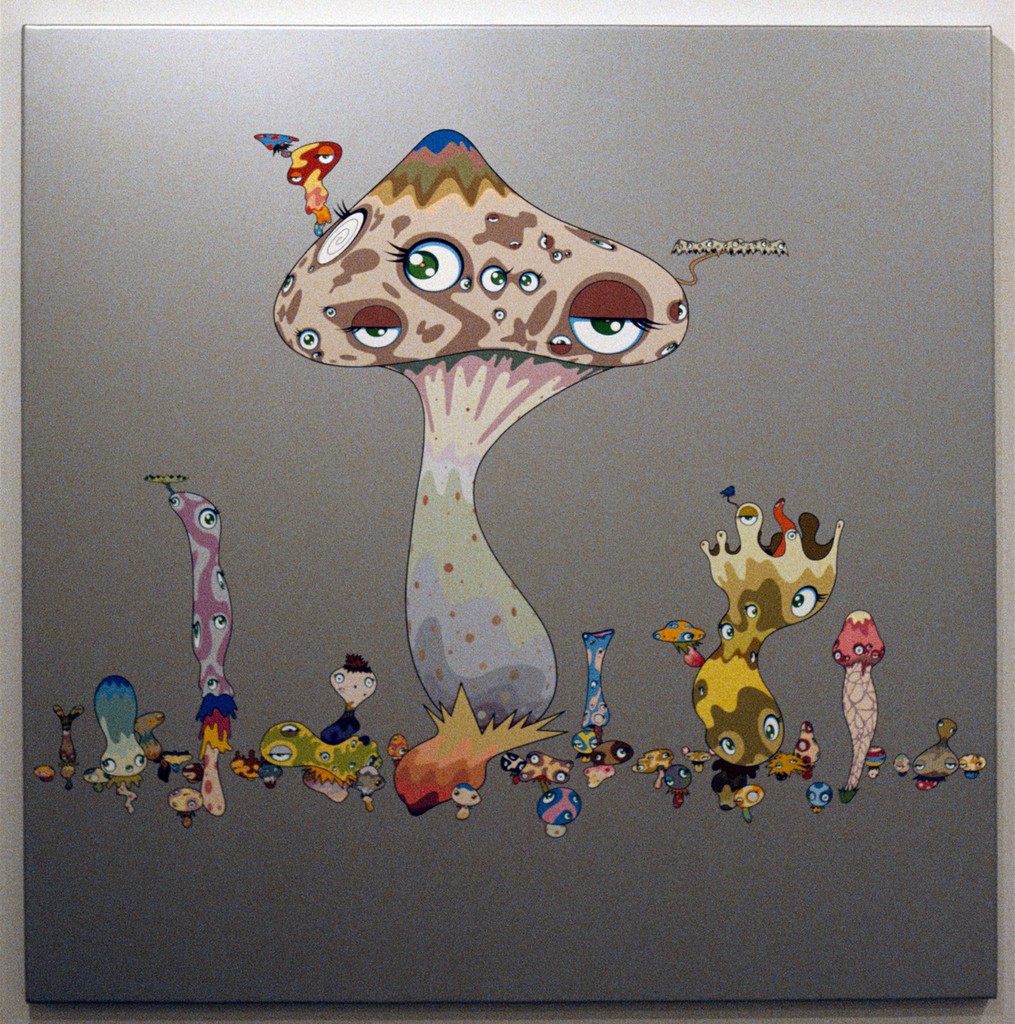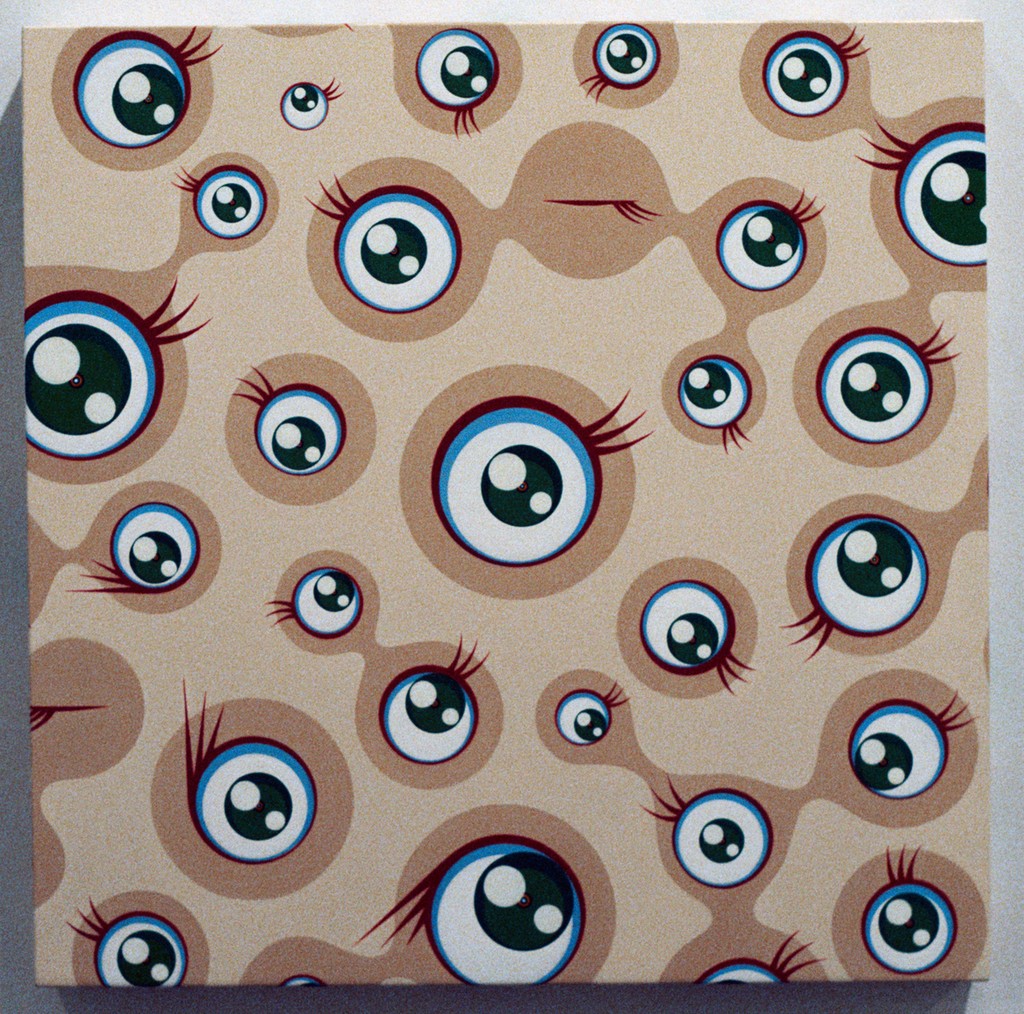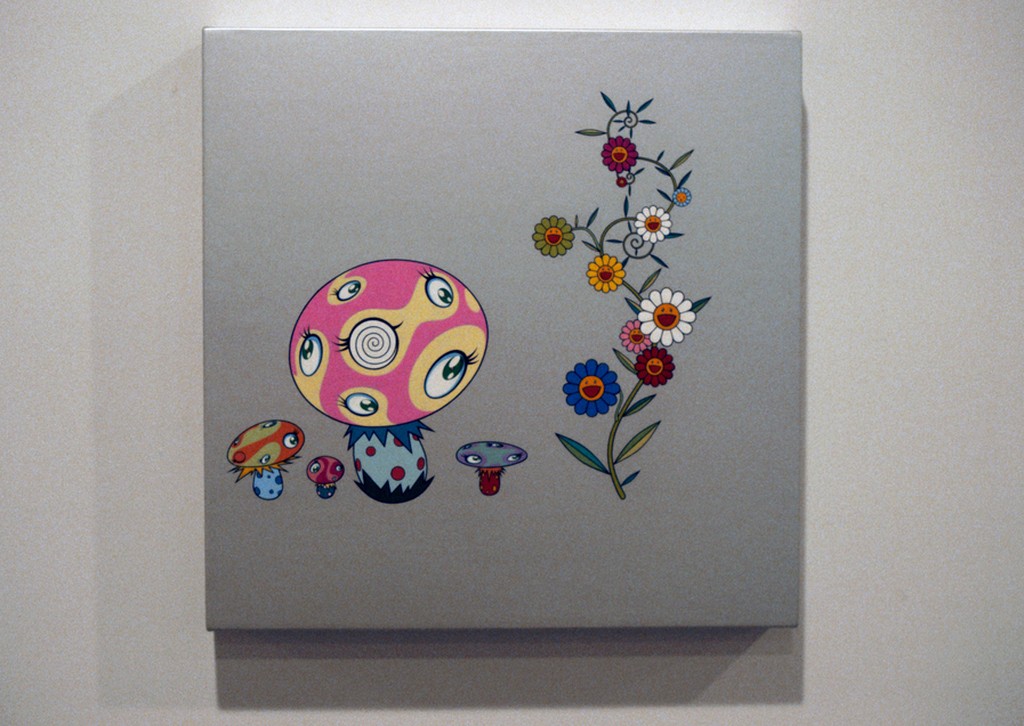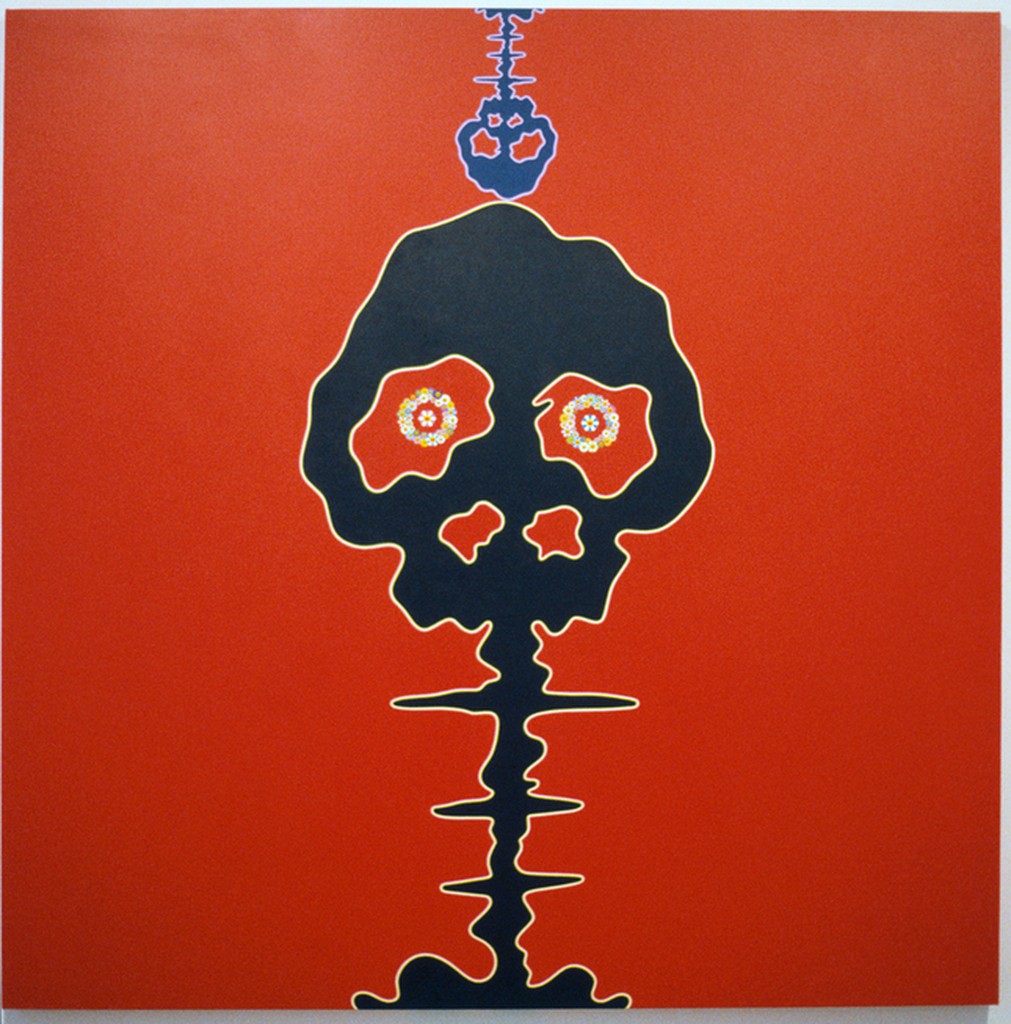Jason Houle and Hana Tanabe
http://diluo.digital.conncoll.edu/Asianart/uncategorized/murakami-wink/
http://diluo.digital.conncoll.edu/Asianart/uncategorized/murakami-jellyfish-eyes-cream/ http://diluo.digital.conncoll.edu/Asianart/uncategorized/murakami-untitled-mushrooms-and-flowers/
http://diluo.digital.conncoll.edu/Asianart/uncategorized/murakami-melting-dob-d/ http://diluo.digital.conncoll.edu/Asianart/uncategorized/murakami-castle-of-tin-tin/
http://diluo.digital.conncoll.edu/Asianart/uncategorized/murakami-mushroom-bomb/
Exhibit Overview
Born in 1962, Takashi Murakami grew up in a postwar Japanese society – one largely defined by the Japanese loss to and subsequent occupation by Western forces after World War II. Although Western influence was strongly felt in all aspects of Japanese society, popular culture is one area where this influence can be easily seen. As an example, in media such as anime and manga, the exaggerated, Western-inspired rounded eyes have become symbols of innocence, childishness, and a non-threatening nature; they have become symbols of cute, or kawaii. This, in a way, is a reflection of how Japan came to be perceived by Western powers after the war. Japanese culture was viewed as odd, eccentric, and ultimately non-threatening – it was viewed as something that the West had a degree of power over.
Murakami argues that Japanese popular culture is a site of the nation’s infantilization – a symbol of a “castrated nation-state.” However, this same pop culture has a soft power to it that allows Japan to reassert its identity internationally. Murakami’s work illustrates this concept to viewers through its ‘superflat’ nature. ‘Superflat,’ a term officially coined by Murakami in 2000, illustrates a collision and combination of both traditional Japanese art and contemporary, Westernized art; it flattens the distinction between the past and the present of Japan, and Japanese high and pop culture. In doing so, Murakami upholds a tradition of Japanese aesthetics, emphasizing the connection between the old and the new. Using influences from both early Modern Edo period art and digitized animation, Murakami utilizes and subverts the Western view of Japan as infantilized to communicate the message of a unique Japanese identity.
The images selected in our exhibit, ‘All Eyes on Murakami,’ highlight several different aspects of Murakami’s superflat style and message. Although Murakami works with a multitude of different mediums across both ‘high’ and ‘low’ arts (including sculpture, animation, merchandise, etc), we have chosen to focus on a single work type – paintings. Thus, the exhibit is limited to a medium traditionally labeled as ‘fine art.’ However, each painting features the bright, flat colors found in modern pop culture, showcasing the blend between fine art and popular culture that is the focus of the superflat movement. Murakami’s utilization of perspective on a 2-D plane influences viewers’ gazes in a way similar to early Japanese paintings, while his pop-art style remains appealing and marketable to a Westernized culture and audience – marketable in a similar way that said early paintings were in their eras.
While some paintings place a focus more on dimensions and the use of space, others display aspects of a specific character, and others still place an extremely clear focus on the impact of war in Japan. Across all of the paintings, however, one thing remains constant – the presence of those rounded, anime-esque eyes that have come to define Japanese popular culture. These eyes are as versatile as the artist who painted them. While some appear appealing and marketable, others give viewers a sense of confusion, and others still may evoke fear and discomfort. The gaze of these eyes, along with the gaze of the viewer across Murakami’s art, are what ultimately shape his superflat message.
Bibliography
Cornyetz, Nina. “MURAKAMI TAKASHI AND THE HELL OF OTHERS: SEXUAL (IN)DIFFERENCE, THE EYE, AND THE GAZE IN ©”MURAKAMI”.” Criticism 54, no. 2 (2012): 181-95. Accessed May 6, 2021. http://www.jstor.org/stable/23267737.
Darling, Michael. “Plumbing the Depths of Superflatness.” Art Journal 60, no. 3 (2001): 76-89. Accessed May 6, 2021. doi:10.2307/778139.
“MURAKAMI OFFERS AN EYEFUL.” Art on Paper 6, no. 6 (2002): 15-16. Accessed May 6, 2021. http://www.jstor.org/stable/24558939.
Ngai, Sianne. “The Cuteness of the Avant‐Garde.” Critical Inquiry 31, no. 4 (2005): 811-47. Accessed May 8, 2021. doi:10.1086/444516.





